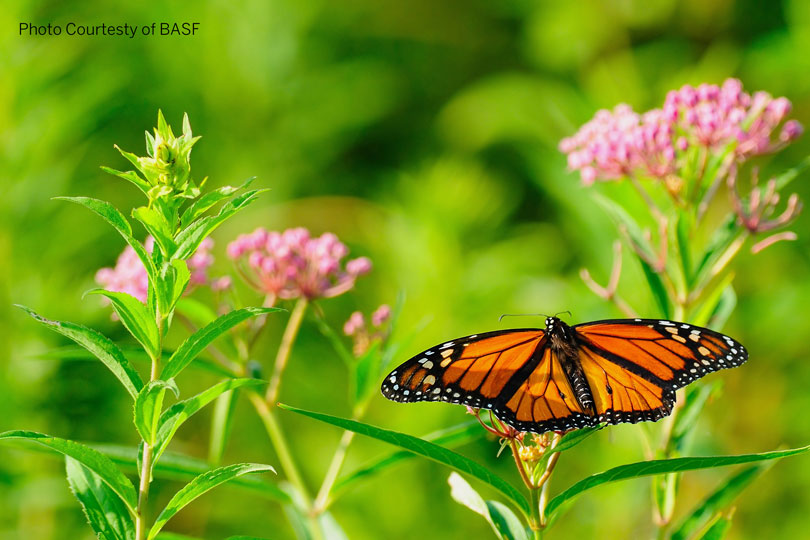By Jessica Domel
Multimedia Reporter
As a critical stop on the Monarch butterfly’s migration route to and from Mexico each year, Texas landowners are encouraged to do what they can to increase the butterfly’s habitat and numbers before it is considered for federal Endangered Species Act protection.
Since the 1990s, the number of Monarch butterflies has declined due to a number of factors.
This year, the U.S. Fish and Wildlife Service (USFWS) is examining the number of butterflies and conservation efforts across their migration routes in the spring and fall.
“This is a unique moment in time for pollinator health and populations. There are many factors impacting declines in monarch population. Loss of habitat is one of them,” Peter S. Berthelsen, The Bee & Butterfly Habitat Fund Partnership Coordinator, said. “That’s why farmers can make huge a huge difference by identifying the opportunities within their current farm and ranch operation that can benefit and support their habitat needs.”
If USFWS determines not enough has been done to save the Monarchs, they could be listed as endangered or threatened, which could mean limits on what farmers, ranchers and landowners can do on their property along the migration route.
To encourage Monarch habitat conservation, a collaboration called Farmers for Monarchs was announced at the Commodity Classic in February. The goal of the group is to get farmers and ranchers the resources they need to leverage the benefits of planting and restoring pollinator and conservation habitats on their lands.
Voluntary efforts include planting milkweed and nectar plants in managed rural areas like field borders, pivot corners, conservation lands, ditches and buffers that benefit the Monarchs during migration without hindering farm and ranch activities.
According to Farmers for Monarchs, the work of farmers, ranchers and landowners today will influence the agency’s decision in the coming months.
To help farmers with their efforts, BASF is giving away a free flat of milkweed seedlings to the first 1,000 farm families to sign up for their Monarch Challenge.
“The reason we are sending milkweed is because it’s the only plant the Monarch butterfly will lay their eggs on. It’s got a toxin in the leaves that when the caterpillars eat the leaves, it makes them toxic to predators. That’s why they can be so brightly colored and not get eaten,” Laura Vance, BASF Biology Project leader, said.
BASF sends plants that are native to the recipient’s state.
“We’ve made a website at MonarchMilkweedHabitat.com where you can go and find which species of milkweed are native to your state,” Vance said. “It’s really important to plant the milkweed because that is the only larval host for the monarchs and that’s what the caterpillars eat, but the adults drink nectar from flowers.”
In addition to planting milkweed, Vance also recommends planting nectar sources that bloom during migration times.
“The population of Monarchs has dropped by 90 percent in 20 years. There’s a really big problem right now, and there are a lot of different causes to that problem, but one potential way to help is by creating this habitat,” Vance said.
To sign up, visit MonarchChallenge.com and sign up for the newsletter.
A list of resources for landowners on Monarch habitats is available at FarmersForMonarchs.org.
A decision from USFWS is expected in June 2019.

